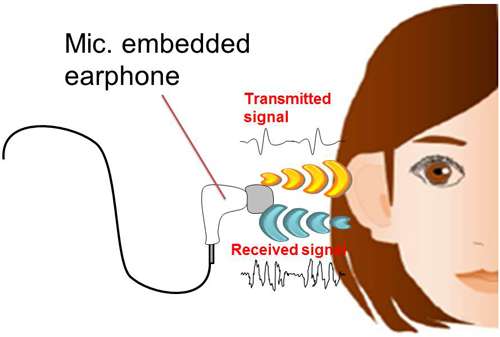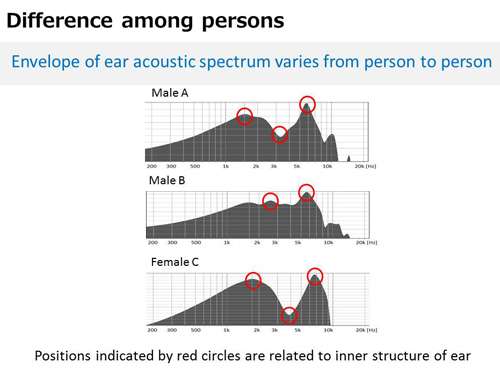March 9, 2016 weblog
Authentication path: NEC targets acoustic characteristics of ear

Biometric authentication has frequently made the news—without even knowing any formal definition, we are used to the headlines and the stories about how fingers or eyes can be the keys to gain access to sites and doors, as means of authentication.
As for formal definitions, one can turn to the University of Auckland department of Electrical and Computer Engineering. "Human biometrics is the automated recognition of a person using inherent, distinctive physiological or involuntary behavioral features. Example biometrics include speech, lips, fingerprints, irises, and gait. Our goal is to develop new algorithms to process unique biometric features extracted from different body parts."
Different body parts? NEC has been turning to another path in biometrics, the human ear. The NEC headline revealed what they have been up to: "NEC develops biometrics technology that uses sound to distinguish individually unique ear cavity shape," said the Monday announcement from Tokyo.
"The new technology instantaneously measures (within approximately one second) acoustic characteristics determined by the shape of the ear, " said the company about their new feature-extracting method.
How is distinguishing a person via ears possible? Take an earphone with a built-in microphone to collect earphone-generated sounds, as they resonate within ear cavities.

Geek.com said NEC worked on this with Nagaoka University of Technology. "They realized that the shape of an individual's earhole is unique and therefore produces a unique sound echo given the right equipment. That equipment has been condensed down into the form of an earpiece containing a speaker and microphone."
Matthew Humphries, senior editor for Geek.com, wrote on Tuesday that, yes, you would wear the earphone just as if you were wearing it to listen to personal audio. For biometric checking requirements, "several hundred milliseconds of audio signals are emitted by the speaker into the ear. The signals travel through the external auditory canal, eardrum, middle ear, and internal ear. The microphone picks up the reflected audio signals, which are unique and can be compared to a recording. If the two match, which takes less than a second to determine, then the person wearing the earphone can be verified."
NEC said that "Results of experiments have shown that, in particular, the signal components that travel through the external ear canal and are reflected by the tympanic membrane, as well as those signal components that pass through the tympanic membrane and are reflected within the inner parts of the ear, are both important for recognition."
The company also stated that the method enables "highly accurate" recognition, with greater than 99 percent accuracy.
How close is this technology to assuming realtime presence? NEC plans to commercialize the technology in FY2018. Targeted applications involve the prevention of identity fraud in operations related to safety and security.
© 2016 Tech Xplore



















